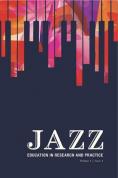Heptatonic Synthetic Scales Nomenclature and Their Teaching in Jazz Theory
The teaching of jazz theory has long been linked to the use of modes and nontraditional scales that have enriched jazz improvisation and composition. Nevertheless, jazz scholars have not reached a consensus in regard to scale nomenclature, especially in relation to heptatonic synthetic scales or modes. The tendency to describe synthetic scales with proper nouns is becoming less frequent for one reason: a name like Hungarian or Jewish scale does not convey any musical information. A proper noun becomes useless if the scale is not written in standard music notation, letter notation, or if a formula does not accompany it. The trend that has lately gained relevance relates to the altered modal terminology started by George Russell in 1953 in his book Lydian Chromatic Concept of Tonal Organization. Ron Miller deepened that concept in 1996 in Modal Jazz Composition & Harmony and Gary Keller did the same in 2006 in The Jazz Chord/Scale Handbook. This article reviews all the major literature in relation to jazz scale theory and examines its evolution in terms of nomenclature. Furthermore, it traces the jazz scale nomenclature tendency, where a critical mass of jazz education seems to be heading.
Citation:
Celi, Diego. ''Heptatonic Synthetic Scales Nomenclature and Their Teaching in Jazz Theory.'' Jazz Education in Research and Practice, vol. 1, no. 1, 2020, pp. 135-154, doi: DOI 10.2979/jazzeducrese.1.1.10.

